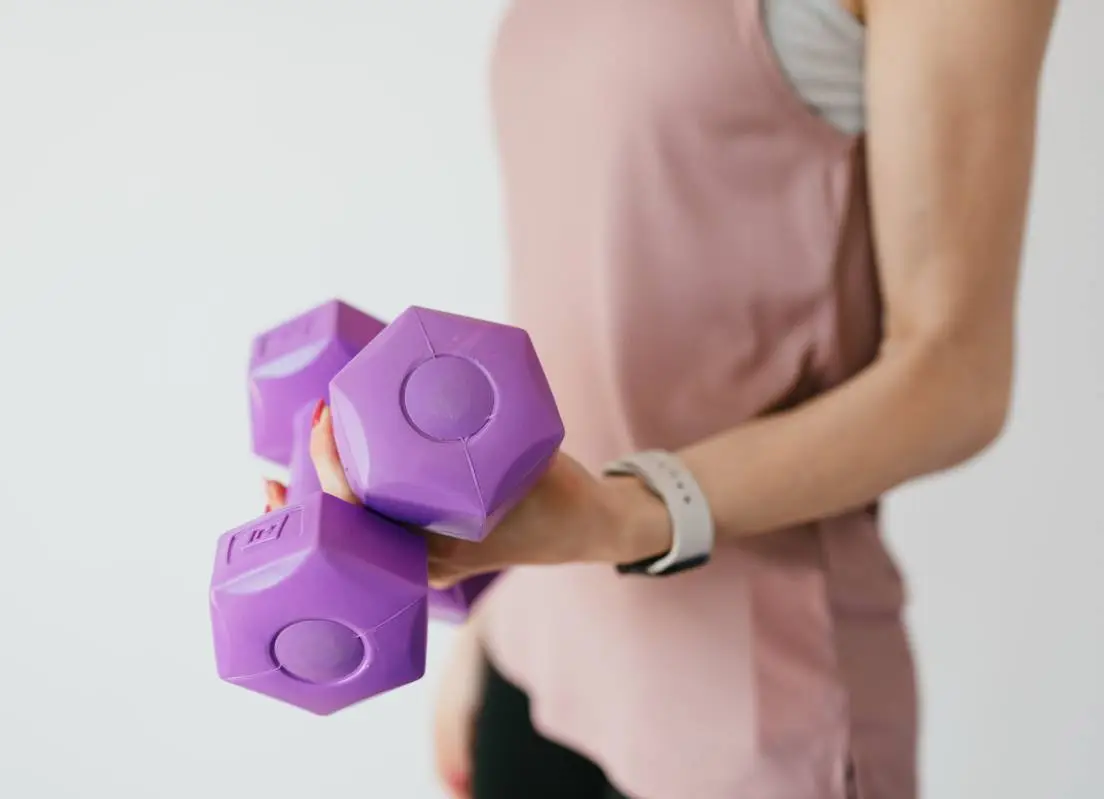Dumbbells, timeless tools in the realm of strength training, offer a versatile means to initiate beginners to the world of fitness. Suited for a wide range of exercises, they provide an ideal starting point for those looking to enhance muscle tone, improve balance, and increase overall strength. Even with a minimal setup, newcomers can execute a full-body workout, targeting everything from major muscle groups to the stabilizing muscles that are crucial for joint health and injury prevention. This introduction to dumbbell workouts simplifies the process of getting started, breaking down the essentials of weight training at a beginner’s pace, and ensuring safety and effectiveness in building a solid foundation of fitness.
Starting Simple with Fundamental Movements
Before delving into complex routines, beginners must master the basic movements using dumbbells. Start with exercises like the bicep curl, shoulder press, and bent-over row, which are foundational movements in upper-body strength training. By focusing on form and control rather than the amount of weight lifted, novices can enhance their muscular coordination and pave the way for more challenging exercises as they progress.
It can also be beneficial to incorporate compound movements, such as the squat and deadlift, which engage multiple muscle groups simultaneously. These exercises not only provide a full-body workout but also improve functional movement patterns that are essential for everyday activities.
Selecting the Appropriate Dumbbells for Your Training
Choosing the right dumbbells is a critical step in kickstarting your fitness journey effectively. Opting for a set that is too heavy can lead to undue strain and injury, while too light may not provide enough stimulus for muscle growth. Beginners should consider exploring a range of weight sets for women that typically start at 5 pounds and increase by increments of 2.5 or 3 pounds. Or, weight sets for men that begin at 10 pounds and go up in increments of 5 or 10 pounds. It is also essential to note that adjustable dumbbells offer a versatile and space-saving option for those with limited exercise spaces. These allow for easy adjustment of weight to suit different exercises and fitness levels.
Graduating to Compound Exercises
Once comfortable with the fundamental techniques, beginners can transition to compound exercises that work multiple muscle groups simultaneously. Movements such as the dumbbell squat to press and lunges with a twist involve both the upper and lower body, offering a more efficient workout that improves functional strength. These exercises not only burn more calories but also simulate real-world activities, making daily tasks easier and reducing the risk of injuries.
Perhaps trying a circuit workout, where different exercises are performed consecutively with minimal rest in between, can be a fun and challenging way to incorporate compound movements into your routine. This type of training not only keeps the heart rate elevated but also builds endurance and strength.
Progressing with Weight and Resistance

A good idea is to track your progress by keeping a workout journal or using a fitness app. This can help set realistic goals and measure improvements over time, allowing for adjustments in weight and resistance as needed. If the goal is to build muscle, progressively increasing weight and resistance is essential. However, if the aim is weight loss or toning, higher repetitions with lower weights can be just as effective.
Staying Safe and Healthy
During any exercise routine, safety and proper form should always be a top priority. With dumbbells, it is crucial to maintain control and avoid swinging or jerking movements that can lead to injury. Proper warm-up and stretching before workouts, as well as cool-down stretches after, can also help prevent muscle strains and soreness.
Additionally, listening to your body and taking rest days is key to avoiding burnout and potential injuries. It may be beneficial to consult with a personal trainer or fitness professional for guidance on proper form and technique, especially when starting out. In some cases, modifying an exercise or using lighter weights may be necessary to avoid injury or aggravating any pre-existing conditions.
The Role of Nutrition in Dumbbell Training
To complement your dumbbell workout regimen, paying attention to nutrition is vital. A balanced diet fuels your workouts and aids in muscle recovery and growth. Beginners should focus on consuming a mix of carbohydrates for energy, proteins for muscle repair, and healthy fats for overall health. Hydration is equally important, as even mild dehydration can impair workout performance and recovery. Consider preparing a meal strategy that aligns with workout intensity and personal health goals, and doesn’t shy away from consulting with a nutritionist for a tailored eating plan.
If you tend to snack during or after your workout, choosing nutritious options like fruits, nuts, and protein bars can be an excellent way to refuel and replenish the body’s energy stores. It is also essential to listen to your body’s hunger cues and fuel accordingly with healthy, balanced meals throughout the day.
Overcoming Plateaus and Staying Motivated

On the other hand, if you’re struggling with staying motivated to work out consistently, try diversifying your routine by incorporating other forms of physical activity such as cycling or swimming. These can provide a change of scenery and offer a break from the monotony of regular workouts. Joining classes or online communities that focus on dumbbell training can also offer accountability and support from like-minded individuals.
Embarking on a fitness journey with dumbbells paves the way for a stronger, more capable you. With the simplicity and versatility of this classic fitness tool, you have the power to sculpt, strengthen, and challenge your body in the comfort of your own home. Remember to prioritize proper form over the amount of weight you lift, to listen to your body’s needs, and to pair your exercise with thoughtful nutrition. With persistence, progression, and a commitment to holistic wellness, the benefits of dumbbell training can echo in every aspect of your life, from improved physical strength to a more focused and resilient mind.

Speaks from heart, always too passionate and driven by emotions. Spins the words with kindness & sharpness, intriguing your ever-inscrutable minds.


